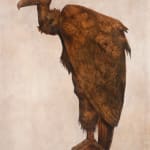Willem van den Berg (1886-1970)
Willem van den Berg was born on February 16, 1886 in The Hague, where he first trained with his father: Andries van den Berg, a painter, print-maker and art teacher. He later enrolled at the local Academie voor Beeldende Kunst. Van den Berg also took study trips to Belgium, Italy and England and worked with the Barbizon artists in France. One of his paintings was exhibited at the Jeu de Paume in Paris in 1926. In 1935, Van den Berg exhibited at the Art Institute of Chicago and he continued to paint and exhibit internationally throughout his career. By 1938 he moved to Amsterdam, where he became the director of the National Academy of Fine Arts and remained until his death on 23 December 1970. In 1959 he received second prize at the International Art Exhibition in Edinburgh.
Van den Berg painted still lifes, landscapes and portraits although he is mostly known for renderings of peasants and Dutch fishermen. Like his contemporaries, Van den Berg also found inspiration in the nineteenth century Amsterdam zoo Artis, sketching animals to be worked on in the studio in a variety of mediums such as lithographs, woodcuts, drawings or paintings. Funny creatures like the condor captured his imagination as is evident in the many iterations of these feathered birds.
Provenance
Possibly Sale Phillips, London, 15 October 1990, lot 14[1]
Private collection, The Netherlands
[1] Not illustrated, dimensions 105 x 64 cm.



